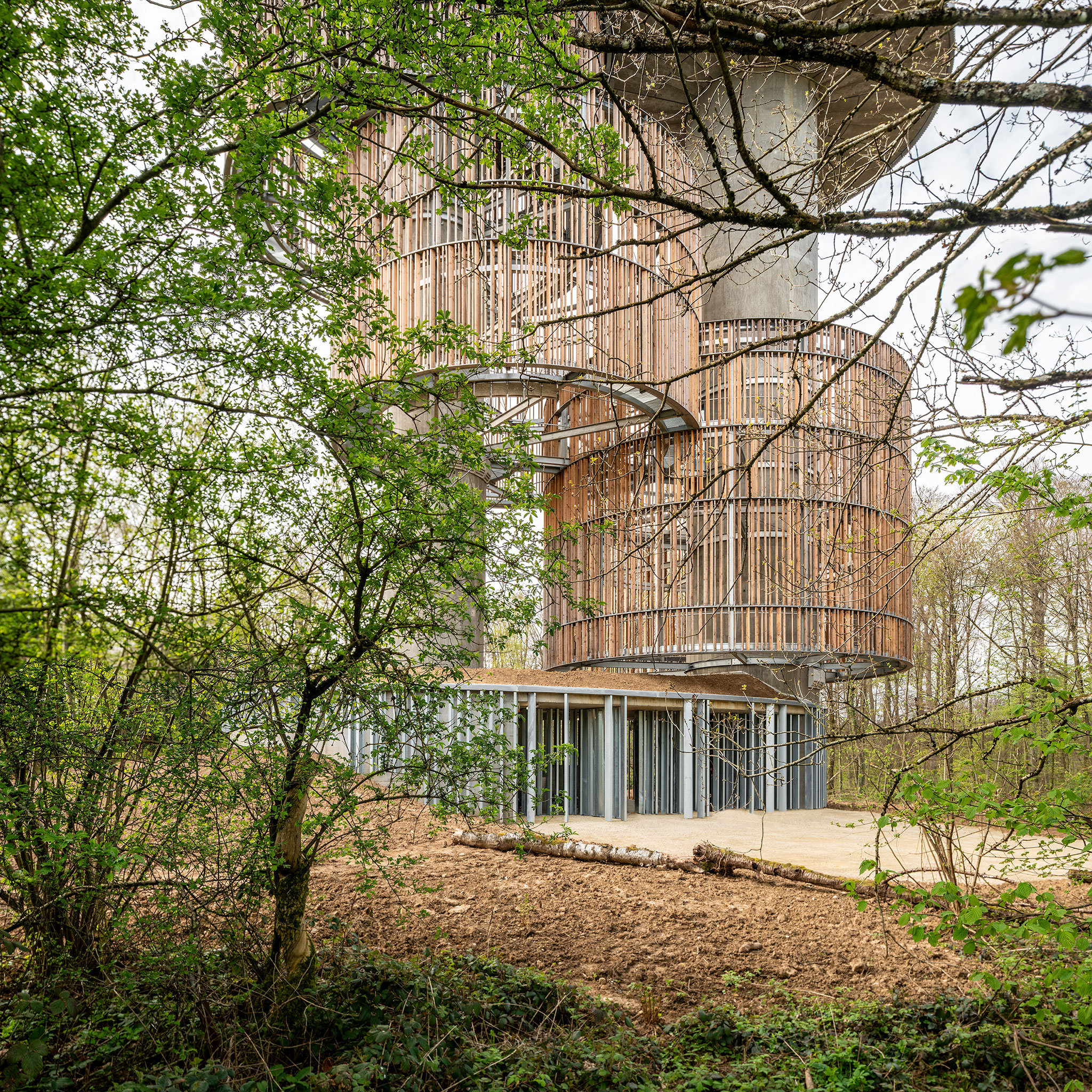The architects designed a fragmented water reservoir, which is actually two reservoirs of 600 and 400 m³ (a total of 1,000 m³), which is supplied with water from the Glaasburen springs, via the Glaasburen pumping station, and from the Sebes from the valve chamber on Pierre-Frieden Boulevard, with the return water pipe from the pumping station already installed towards Kirchberg.
The 49 m high reinforced concrete structure rises from 2 concrete shafts that carry the vertical circulation and support the 2 independent water tanks, which are topped with a roof-terrace that allows panoramic views to observe the fauna and the natural environment.
The envelope is made up of two parts: prefabricated concrete matrix and steel drums made from wooden slats. Each slat is tilted at a precise angle, allowing the façade to move and facilitating the integration of nests for different species (bats, swifts, hawks).

Bird and mammal refuge and water reservoir by Amann-Canovas-Maruri. Photograph by Miguel Fernández-Galiano.
Project description by Amann-Canovas-Maruri + Adelino Magalhaes
The project is located in a protected forest of the “Natura 2000 Network” in the city of Luxembourg. The challenge is to integrate 1000m3 and 50-meter-high drinking water tanks into a fragile context. To do this, a program is generated that, after studying the conditions of the forest and its relationship with other “Natura 2000 Network” forests, includes spaces not only for local birds, but also a refuge for seasonal species. In the same way, the building serves animal and plant species and has the vocation of becoming another tree in the area. Its reflection goes, then, beyond human needs and therefore becomes a more than human project.
The program is divided into two volumes designed according to the strictest technical specifications. The first is resolved with a rough, prefabricated concrete skin in which swallow nests are inserted in an orderly fashion at different heights and with precise orientations. Also in this volume, a nest for peregrine falcons is built at a height of 50 m. Both the materials and the locations are studied by groups of naturalists and ornithologists who complement the design team. The second volume is covered in cork, which acts as a layer of thermal insulation against the water tank. On top of this element, a second permeable skin of untreated larch wood is built, which facilitates the nesting of seasonal species and on which bat nests are placed. This wooden skin will eventually be covered with vegetation, thus constructing a complement to the local ecosystem. The ground floor is protected with a metallic permeable skin that acts as a deterrent against intrusion into a strategic infrastructure. The exterior and interior pavements of this area are made of rammed earth and its roof also becomes an element of vegetal cover.
On the other hand, the collection of rainwater that is stored outside is studied. In short, a strictly contextual project is built that walks with nature.





































